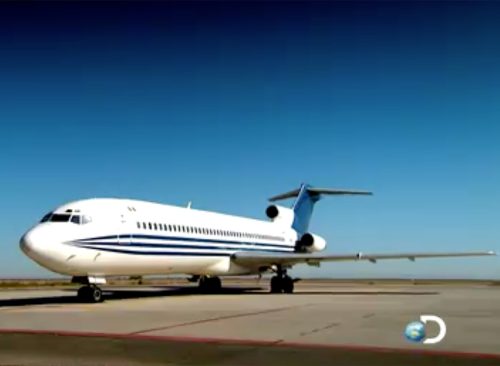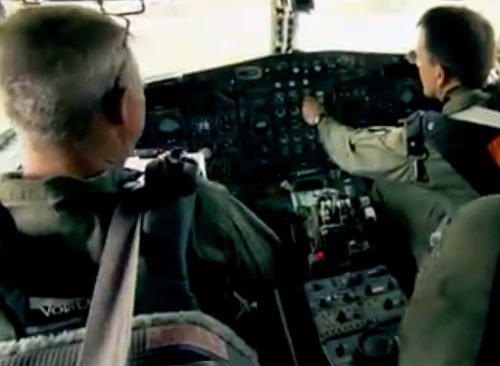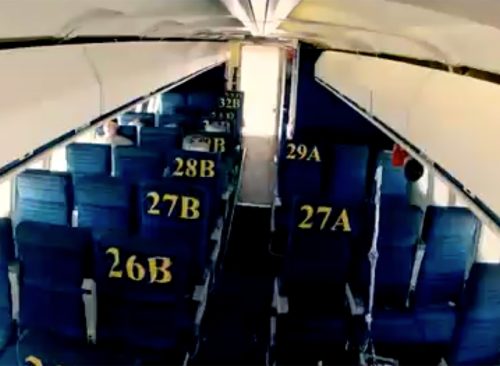Video Shows Jet Crashing and Splitting in Two in Resurfaced Footage From Test
These are the safest—and most dangerous—seats for passengers.

Footage has resurfaced of a Boeing 727 passenger plane being deliberately crashed as part of an experiment to see which seats on the plane were safest. Researchers loaded the plane with crash test dummies, electrical equipment, and filled up the overhead compartments to make the experiment as realistic as possible. After the plane crashed and split in two, they examined the wreck to see what the safest and most dangerous parts of the plane would be for passengers. Here's what they found.

The Boeing 727 took off from Mexicali airport with six people on board, all of whom parachuted out one by one. At 4000 ft in altitude, former Navy test pilot Chip Shanle took over control of the plane remotely, killing the engines, so the plane crash-landed at 140mph on impact, causing the cockpit to separate from the plane and collide with the left wing. Shanle believes the flight engineer would not have survived the crash, but the pilot and copilot would have had a good chance. "You knew they were getting a rough ride in there," Shanle says. Keep reading to learn more and see the video.

Scientists and investigators concluded that no one in Row 7 forward would have survived the impact, with one seat being catapulted 500 feet away from the crash site. This makes First Class by far the most dangerous part of the plane for passengers. Interior cameras also showed luggage flying out of overhead bins and slamming into the crash test dummy passengers, a cause for concern as carry-on items are getting heavier and heavier.

Investigators said the plane behaved as it should in a crash, with the landing gear shearing off to avoid puncturing the fuselage. "It is always quite humbling to see the level of destruction in an accident," says Anne Evans, a former senior crash investigator for the United Kingdom's Air Accidents Investigation Branch. "Nothing looks as it did before the accident."

So—which part of the plane is safest for passengers? After examining all the evidence, including injuries to the crash test dummies, scientists concluded that passengers sitting in the front of the plane would not survive. Passengers in the middle would likely have concussions and broken ankles, while those in the back of the plane would be able to walk away uninjured. "In terms of relative safety, my view is that the front of the aircraft is more vulnerable," Evans says. "My favored location would be the middle, over the wing, or the rear of the fuselage."

The investigators wanted to make it clear that while this information is useful, plane crashes are extremely rare. "We're not trying to scare anybody here," says John Hansman, an aeronautics professor at the Massachusetts Institute of Technology. "But the more we understand them, the more we can do to make airplanes even better in the future."
"The chances are that if you're in a crash, you will survive," says Tom Barth, an investigator with the National Transportation Safety Board who helped study the crash's impact on passengers.














